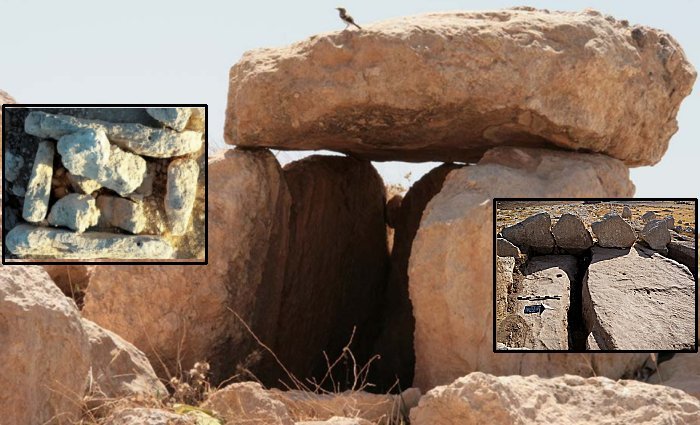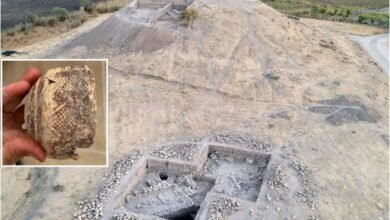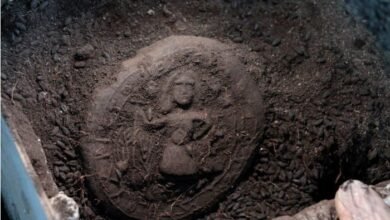
Conny Waters – AncientPages.com – A research team from the University of Copenhagen has made a significant discovery at Murayghat in Jordan, uncovering an Early Bronze Age ritual landscape. This finding offers valuable insights into how ancient communities adapted to social and environmental changes.
Dolmen L.7008, constructed platform to the left, connecting wall left lower corner (The Ritual Landscapes of Murayghat Project, Susanne Kerner).
The 5,000-year-old site of Murayghat, which was extensively excavated, provides clues about how ancient cultures dealt with crises and the collapse of established social orders.
Emerging after the decline of the Chalcolithic culture (circa 4500–3500 BCE), known for its domestic settlements, symbolic traditions, copper artifacts, and small cultic shrines, Murayghat reveal a different settlement pattern compared to the Chalcolithic period.
Instead of large domestic settlements with smaller shrines typical of that earlier era, the researchers found in the area, clusters of dolmens (stone burial monuments), standing stones, alongside massive megalithic structures.
Overview of central knoll (Area 1) from N, showing different lines of standing stones (The Ritual Landscapes of Murayghat Project, Susanne Kerner).
Unlike the residential settlements of earlier periods, Murayghat shows little evidence of domestic life. Researchers suggest that the collapse of the culture might have been influenced by climate shifts and social disruptions. In contemplating these challenges, Early Bronze Age groups responded by developing new forms of ritual expression.
The Early Bronze Age Murayghat showed adaptability and resilience in the face of changing circumstances,
According to Susanne Kerner, the project leader and archaeologist from the University of Copenhagen, recent excavations at this ceremonial site delivered discoveries suggesting that the site was used for ritual gatherings and communal burials rather than as living quarters.
Dolmen found at Murayghat in Jordan. Photo: Susanne Kerner, University of Copenhagen
The team have documented over 95 dolmen remains at the site, with the central hilltop featuring stone-built enclosures and carved bedrock elements that indicate ceremonial use. These visible structures likely played a role in redefining identity, territory, and social roles during a period lacking strong central authority.
According to Kerner, “Murayghat provides us with intriguing new insights into how early societies responded to disruption by constructing monuments, reshaping social roles, and forming new community structures.”
Trench 8 with building 1 in the upper (northern half) and the circular room 5 in the south. B = bedrock (The Ritual Landscapes of Murayghat project, Susanne Kerner).
Excavations at Murayghat have uncovered Early Bronze Age pottery, large communal bowls, grinding stones, flint tools, animal horn cores, and some copper objects—all suggesting ritual activities and potential feasting events.
In their paper, the researchers write that “the combination of large burial grounds (the dolmen fields), non-domestic structures and the location at the edge of a large wadi with wide sweeping views gives Murayghat the character of a ‘special site’.
It was probably a meeting point for regional groups, a shared ceremonial site, perhaps serving as a gathering place for various regional communities of the plain .
Written by Conny Waters – AncientPages.com Staff Writer








